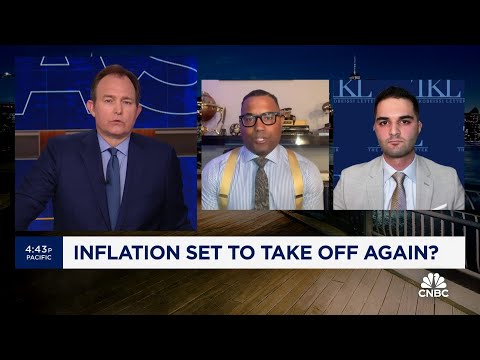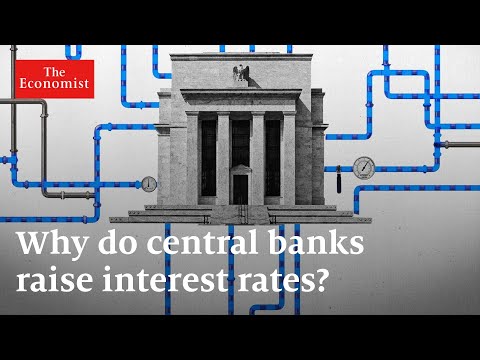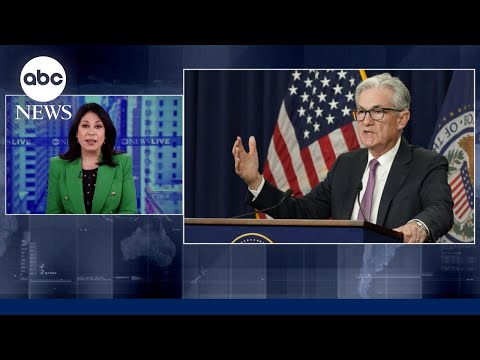Navigating the current interest rate waters requires both the wisdom to understand the economic backdrop and the practical steps to adjust one’s financial sails effectively. Let’s dive into the crux of what you must know about current interest rate trends as we journey through 2024 into 2025.

Analyzing Current Interest Rate Fluctuations and Predictions

The Current Interest Rate Climate: A Snapshot of 2024
– Overview of the prevailing economic conditions impacting interest rates
Economic conditions have been nothing short of a roller coaster, and current interest rates reflect these undulations. Interest rates are closely tied to central bank policies, and with ING’s interest rate predictions starting at 4% at the beginning of 2024, enthusiasts and skeptics alike keep their eyes peeled on any twitch of the financial dials.
– Analysis of recent rate changes by major central banks
The most recent updates show the Federal Reserve’s hand in a delicate dance aimed to temper inflation without stifling economic growth, resulting in projected cuts starting in the second quarter of 2024. Meanwhile, the European Central Bank has been maneuvering through its own set of challenges.
– Current inflation rates and their interplay with interest rates
Inflation remains the thorn in the side for many economies, keeping central banks on their toes. The current tug-of-war between stabilizing prices and sustaining economic activity means interest rates are more sensitive to inflation data than ever before.

| Quarter/Year | Predicted Interest Rates | Contributing Factors |
| Current (as of July 2023) | Prime Rate: 8.50% | Bank of America N.A. prime rate effective as of July 27, 2023 |
| Q1 2024 | ~4.00% | ING’s predictions reflecting economic forecasts |
| Q2 2024 | ~3.75% | Anticipated rate cuts as inflation slows |
| Q3 2024 | ~3.50% | ING’s prediction for further economic adjustments |
| Q4 2024 | ~3.25% | Continued economic weakening leading to rate reductions |
| End of 2024 | Mid- to low-6% range | Mortgage rates drop as Federal Reserve cuts rates |
| Early 2025 | High-5% territory | Predicted decrease in 30-year fixed mortgage rate |
| Throughout 2025 | ~3.00% | Ongoing economic trends and ING’s forecasted decline |
Historical Context and Its Impact on Today’s Rates
– A comparative look at interest rates over the past decade
Reflecting back just a decade, we’ve seen rates sitting at record lows, providing a stark contrast to today’s figures. Cheap money was once abundant, fueling borrowing and spending frenzies.
– How economic policies and global events have shaped current interest rate trends
Everything from trade wars to pandemics has left an imprint on the current landscape of interest rates. Governments and central banks worldwide have orchestrated policies and interventions that have shaped today’s trends.
– Analysis of data showing the cyclical nature of interest rates
Interest rates ebb and flow in predictable cycles influenced by economic activity – and data from past decades is a testament to these patterns. Despite pandemonium, the cyclical heartbeat of interest rates continues.

Factors Driving the Dynamics of Current Interest Rates
– Examination of current geopolitical tensions and their influence on the economy
It’s not a secret that global frictions can send shivers down the spine of financial markets. The current geopolitical landscape has shifted focus to energy prices and supply chain woes, which indirectly tweak the interest rate dials.
– Impact of technological advancements on lending and interest rates
The growth of FinTech has been phenomenal, providing alternative lending avenues and thereby influencing how traditional banks respond – including tweaking their interest rates to stay competitive.
– The role of consumer behavior and spending patterns on interest rate adjustments
It’s a two-way street: consumer spending habits affect how banks adjust their rates, while changes in rates influence spending and saving mindsets. Understanding this dynamic is key to smart financial planning.

Industry-Specific Interest Rate Trends and Their Implications
– Sector-by-sector analysis of interest rate impact
From snagging the keys to your new ride, with insights into the average down payment on a car, to the financial nuances of getting a higher education, interest rate shifts touch every industry differently.
– How current mortgage interest rates compare with historical figures
The real estate sector keeps a watchful eye on rates; current conventional loan rates and conventional mortgage rates suggest a window of opportunity for keen homeowners.
– Interest rate trends in corporate lending and their effect
Corporate lending rates dictate the pace of business expansion and investment. With costlier capital, companies may hold off on projects, whereas lower rates can ignite a flurry of business activity and growth.
Forecasting the Path of Interest Rates for 2024-25
– Insight from financial experts on expected movements in interest rates
Financial sages anticipate a downward trajectory for interest rates into 2025, marking an inflection point for borrowers and investors alike as current home loan interest rate reflect this gradual descent.
– Examination of government and institutional projections and policy plans
Policymakers play a long game with rate strategies, with the current Bank of America, N.A. prime rate standing at 8.50%. Understanding this gives valuable context to the underlying tactics at play.
– Analysis of leading economic indicators that predict interest rate trends
Economic indicators are the breadcrumbs leading to future rate changes. From unemployment figures to manufacturing indexes, each statistic provides a clue to where interest rates might head.
How Current Interest Rate Trends are Affecting Consumers and Investors
– Real-world examples of how fluctuating interest rates influence personal finance decisions
Personal finance domains feel the immediate impact. When rates shift, so does the approach to mortgages, car loans, and even how one might address angioplasty as The most typical treatment For arteriosclerosis.
– Strategies for managing loans and savings in the current interest rate environment
Adapting to the rhythm of rates entails savvy moves like refinancing when rates dip. It’s a chess game of anticipation and action for those looking to optimize their financial position.
– Advice from financial advisors on navigating the interest rate landscape for investments
Investment gurus often preach the gospel of diversification and flexibility in portfolios, especially vital in a landscape where rates can turn on a dime.
Current Interest Rate Comparisons Between Global Economies
– A detailed look at how different regions are being impacted uniquely
Interest rates are not a monolith; they move in nuanced waves across global economies. While developed nations might wrestle with inflation-induced hikes, emerging markets can be subject to entirely different forces.
– Comparative analysis of interest rates in emerging markets versus developed nations
Emerging markets often battle with higher rates due to perceived risk, while developed nations enjoy their established economic clout to maintain moderate levels.
– The ripple effect of major economies’ interest rates on global financial markets
When the economic titans like the US or the EU tweak their rates, global markets react. Interest rates have a domino effect, where a change by a major player can ripple across the financial pond.
Navigating the Current Interest Rate Environment: Tips for Stakeholders
– Actionable advice for homeowners, students, and entrepreneurs adjusting to current rates
Whether you’re looking to lay down roots with a picket fence dream or jumpstarting your startup, there’s a way to adapt. Timing, research, and consulting with seasoned pros make all the difference.
– Investment strategies that reflect the outlook for interest rates
Investors need to balance risk and reward amidst rate realignments. Bonds, stocks, and real estate each dance to the beat of the interest rate drum.
– Perspectives on locking in rates for mortgages and loans
Consider locking in at fixed rates when they swing low; conversely, floating rates could serve you better when the prognosis is a rate fall, akin to catching the tide at its turn.
Innovative Financial Products Responding to Interest Rate Trends
– Introduction to new banking and lending products
In response to rate volatility, financial innovators are rolling out dynamic financing options. From adjustable rate mortgages fitting the bill for rate gamble to equity-themed personal loans, there’s a tool for every rate scenario.
– Spotlight on financial startups offering unique solutions
The FinTech realm is abuzz with smart solutions for these rate-centric times. Startups are the vanguard, offering flexible products that account for these unpredictable winds.
– How traditional financial institutions are innovating
Not to be outdone, the old guard of finance is retrofitting their offerings to face rate changes head-on. These institutions are introducing features to woo rate-conscious consumers.
The Ripple Effects: Current Interest Rate Impact on Other Economic Segments
– Analysis of interest rate influence on stock markets and retirement funds
Much like the unpredictable plot twists of Fate : The Winx saga, rates steer the direction of stock markets and the fate of retirement nests. They dictate investor sentiment and, ultimately, the financial security of millions.
– Discussion on the bond market’s response to evolving interest rate trends
The bond market, often a haven in turbulent times, recalibrates its pulse with each rate change. As yields fluctuate, so does the allure of this venerable investment archetype.
– The interconnectivity between interest rates and the real estate market
In real estate, interest rates are the invisible hand guiding market trends. Homebuyers and real estate investors watch rates like hawks, determining the right moment to swoop in.
Anticipating Shifts: Preparing for Future Interest Rate Changes
– Guidelines for financial planning in light of uncertain interest rate projections
In an era where the only constant is change, financial wisdom involves preparing for both sun and storm. By staying educated about trends, one can craft a financial plan that stands resilient against rate shifts.
– Techniques for hedging against interest rate risks in business and personal finances
Hedging, once the domain of the savvy investor, has now become a critical part of any financial kit. From interest rate swaps to diversifying assets, defending against rate surprises is essential.
– The importance of staying informed and agile in a volatile interest rate environment
As lawyers stay a step ahead by keeping abreast of the latest verdicts, so must financial enthusiasts track interest rate movements. Staying equipped with the latest intel paves the way for agile decisions and robust financial health.
In the swirling currents of 2024’s financial waters, the siren call of the ‘current interest rate’ beckons to those wise enough to navigate it. Let MortgageRater be your compass as we sail into the horizon of 2024-25, where understanding and adapting to interest rate trends is not just a privilege – it’s a must for anyone striving to thrive in the shifting seas of our global economy.
Riding the Wave of Current Interest Rate Trends
Well, buckle up, home buyers and investors! As we surf through the currents of finance, it’s essential to stay clued in on the current interest rate landscape for 2024-25—it’s been as unpredictable as the plot twists in “season 9 of Suits”. Remember that time when Harvey looked into Donna’s eyes, and, oh boy, the tension was thicker than the last-minute legal brief? Similarly, the tension in the air over interest rate hikes can be cut with a knife.
Now, just as you’d recall some “Rosario Dawson’s powerful performance”, you’d remember how interest rates used to be back in the day. But my friend, times have changed! The economic ebb and flow have seen rates rise and dip like a roller coaster, making you feel like you’re part of an adrenaline-pumping scene. And just when you think you’ve got the trend pinned down, it zigs and zags, fast enough to give you whiplash. So if someone tells you they’ve got it all figured out, take it with a grain of salt.
Heads up—the times ain’t what they used to be. Traditional wisdom about interest rates following certain patterns is as outdated as a flip-phone in a smartphone era. And interest rates lately? Well, let’s say they’ve been on a more surprising journey than the entire “season 9 of Suits” combined! One minute, you think you’ve got the perfect rate locked down, and the next, you’re scrambling faster than Mike Ross on a tough case.
Remember, it’s not just about the numbers; it’s about reading the room—and the room is the economy. Interest rate moves can come from left field, and keeping your eyes peeled on forecast trends can feel like trying to find a clean-cut answer in a series of “Rosario Dawson’s gripping dramas”. And as you wade through these financial waters, keep this is mind: The current interest rate wave might just take you for a ride, so have your wits about you, and maybe a life vest, too.
So here’s the bottom line, folks: Keeping track of the current interest rate trend is a bit like trying to catch the best wave. It’s about timing, a bit of luck, and a whole lot of staying informed. So stay sharp, stay informed, and may the rates be ever in your favor!

What is today’s current interest rate?
Today’s current interest rate from Bank of America, N.A. is 8.50%, effective as of July 27, 2023.
What will the interest rates be in 5 years?
In five years, if predictions hold up, you could see rates around 3%, with ING forecasting a gradual decline until then.
Are mortgage rates expected to drop?
Yep, mortgage rates are on the downswing later this year. The economy’s cooling down and inflation’s taking a breather, which should mean lower rates ahead.
What is the current prime interest rate?
As of the last update on July 27, 2023, the current prime interest rate is sitting at 8.50%.
Will interest rates go down in 2024?
You bet, interest rates are likely to take a dip in 2024. ING suggests we’ll see a slide from 4% to 3.25% throughout the year.
What is the 30-year fixed rate mortgage?
The 30-year fixed rate mortgage is a home loan with a fixed interest rate for the entire 30-year term. Pretty straightforward and great for budgeting as your payment stays the same.
Will mortgage rates ever be 3 again?
While it might seem like wishful thinking with current trends, lower rates like 3% aren’t off the table. ING is eyeing a drop to 3% by 2025, so never say never!
How high will interest rates go in 2024?
Interest rates might get a little bumpy in 2024, starting around 4% and then creeping down as the year goes on. Expect them to peak early in the year before the slide starts.
What will mortgage rates be in 2024?
For 2024, mortgage rates could look pretty friendly to your wallet. They’re forecasted to hit the mid- to low-6% range by the end of the year and maybe even slip into the high-5%s in 2025.
Should I lock in my mortgage rate today or wait?
It’s a bit of a gamble. Locking in today secures your rate, but wait it out and you might catch rates on their way down. It’s all about your comfort with risk and your outlook on the economy.
What is the lowest ever mortgage rate?
The lowest ever mortgage rate was a rock-bottom figure that seems like a dream now—it was around 2.65% for a 30-year fixed mortgage at the end of 2020 and the start of 2021.
How can I get a lower mortgage interest rate?
To snag a lower mortgage rate, you gotta play the credit score game—keep it high. Shop around, consider different loan types, and throw down a hefty down payment if you can.
What is the highest prime rate in history?
The highest prime rate in U.S. history hit the roof at 21.50% back in December 1980. Those were some wild times for borrowers!
What is the overnight rate in the US?
The overnight rate in the U.S., or the federal funds rate, is the interest rate at which banks lend money to each other overnight. It’s the Federal Reserve’s go-to tool for managing monetary policy.
Why is prime rate so high?
Prime rate’s up there because it’s tied to the Fed’s policy and the economy’s inflation. When they try to cool things down, costs to borrow climb up.
Is 2.75 a good mortgage rate?
A 2.75% mortgage rate is pretty darn good by today’s standards. It’s like finding a four-leaf clover in your backyard—rare these days, but incredibly lucky if you snag it.
Should I lock mortgage rate today?
Deciding to lock in your mortgage rate today is like choosing whether to open the umbrella because you think it might rain. If you don’t mind carrying the ‘what-if’ umbrella, lock it in. If you’re feeling lucky, you could chance a wait.
What is the interest rate for a 700 credit score FHA loan?
For an FHA loan with a credit score around 700, you’re looking at rates a bit above the bottom rack—think mid to high 3% or more, but that can swing with market shifts and lender appetites.
Who is offering the lowest mortgage rates right now?
Right now, it’s like a bidding war for the lowest mortgage rates. Online lenders often have less overhead and might offer the best deals, but it’s worth it to look at credit unions and banks, which are in the mix too.



